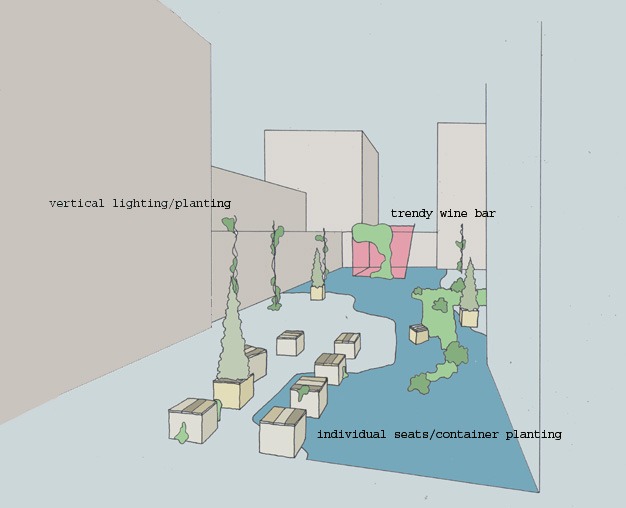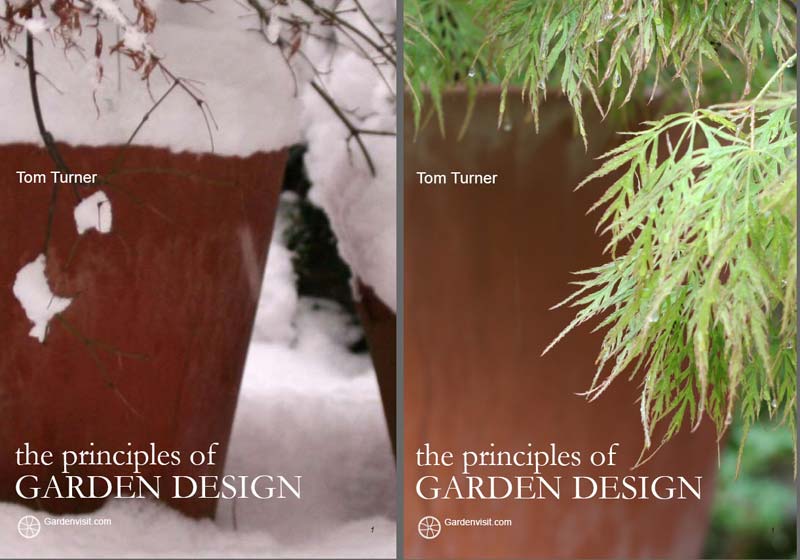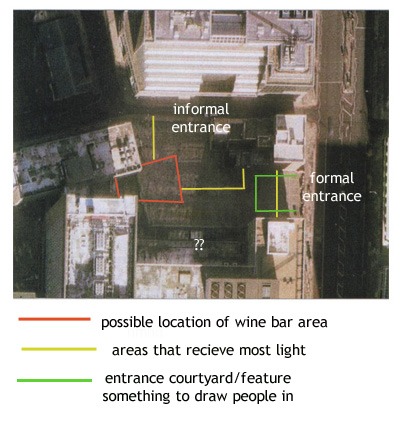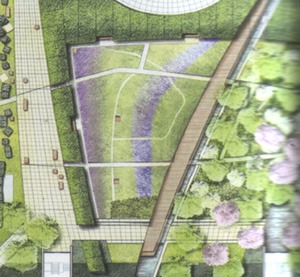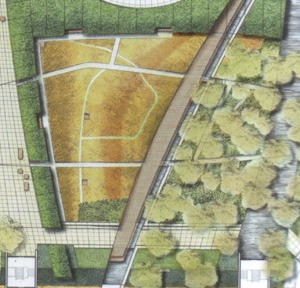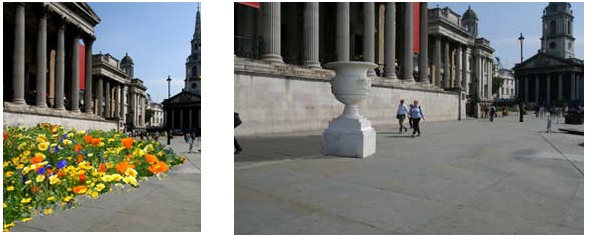
Charles Barry’s design for Trafalgar Square was inspired by the gardens he had seen in Italy and designed in England (including Shrubland Park and Trentham Gardens). In essence, Barry followed Repton’s theory that an important building, like the National Gallery, should be fronted by a terrace. The original idea for a Square in this position had come from from Humphry Repton’s partner (John Nash). A traffic island for 150 years, the Square was rescued by Normal Foster’s part-pedistrianization scheme of 2003. The point Fostor neglected is that garden squares should have flowers.
My suggestion is to grow the flowers in pots and arrange them on the great sandstone slabs in front of the National Gallery. When the space is required for another purpose, the pots can be moved.
If the authorities won’t permit a radical transformation, perhaps they would allow a Classical Vase to stand in front of the National Gallery.

